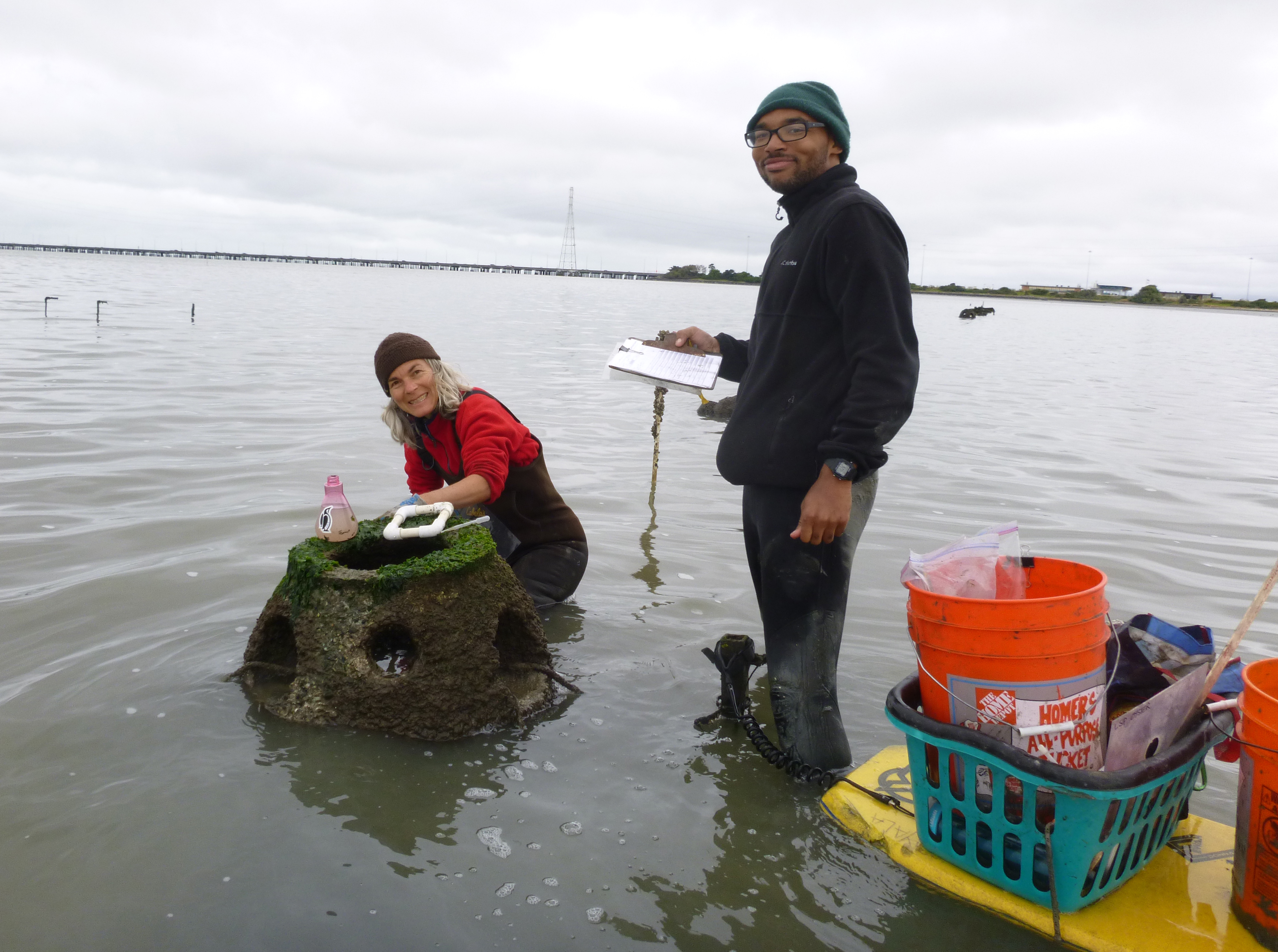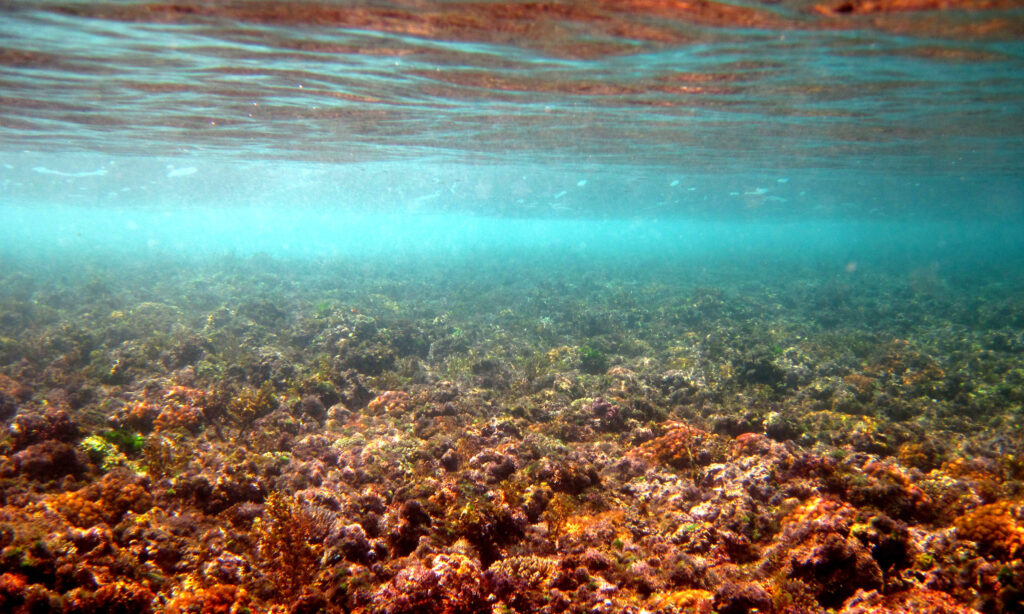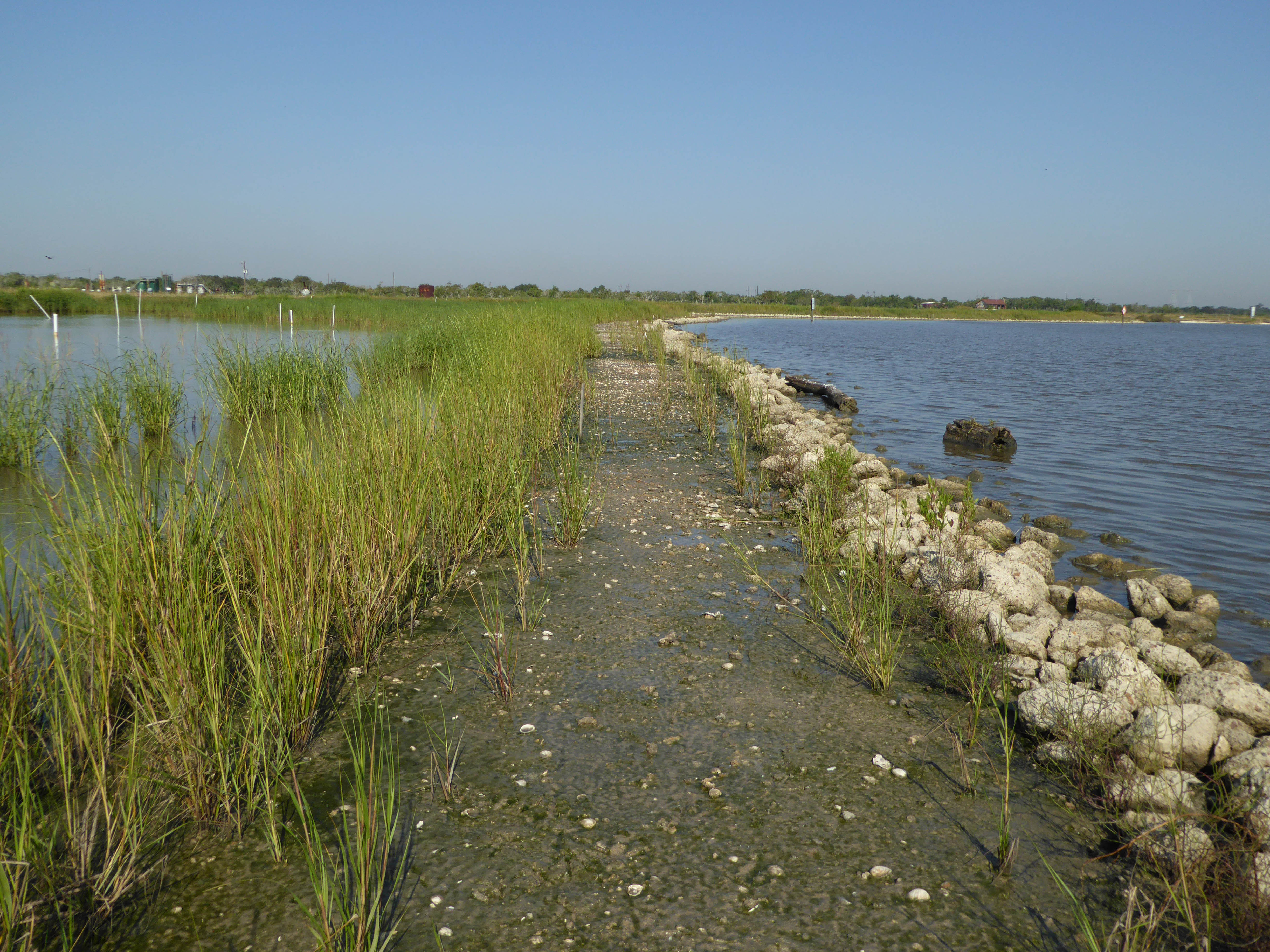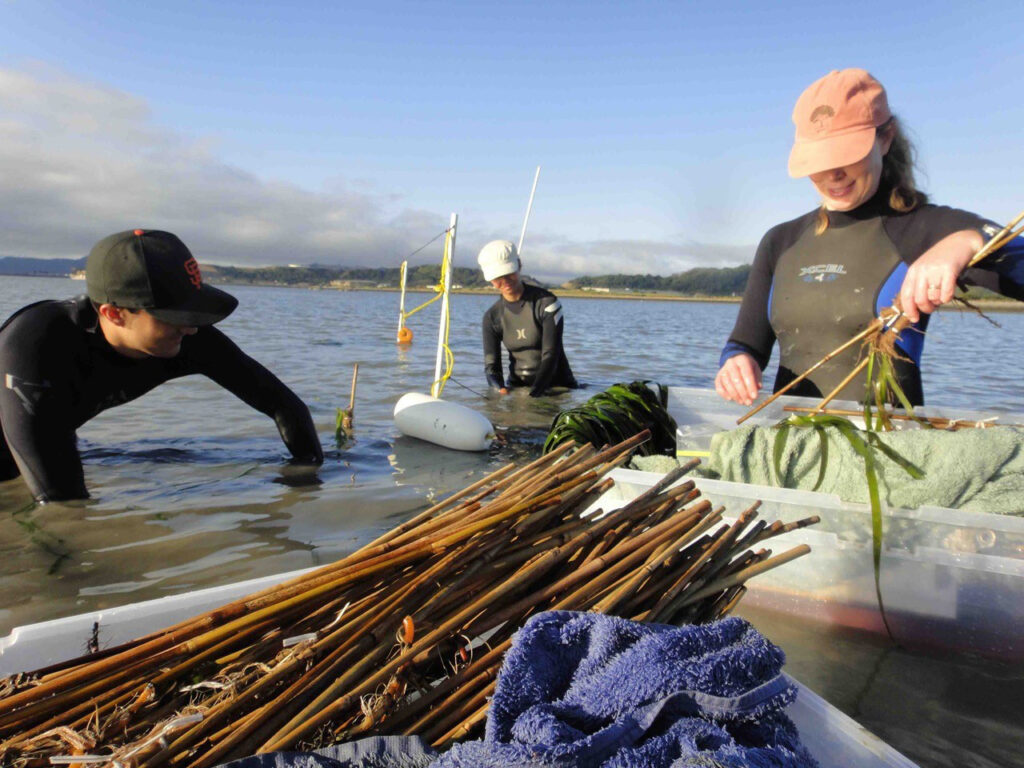by Kristen Goodhue

California is no stranger to extreme events. Record-breaking wildfires or heat waves make headlines nearly every year. But in the winter of 2017, another type of extreme devastated underwater life: A series of “Pineapple Express” storms from Hawai’i created extreme rainfall not seen since the state began keeping records in 1895.
“Several atmospheric rivers came and dumped water on the Bay area,” said Chela Zabin, a marine biologist at the San Francisco branch of the Smithsonian Environmental Research Center (SERC) and lead author of a new study on climate extremes.
“For Northern California, 2017 was the wettest winter on record,” said Andy Chang, a SERC biologist and coauthor. “Given our changing climate, record-breaking, once-in-a-lifetime wet years like 2017 are now projected to occur much more often.”
The downpours wreaked havoc on an oyster and eelgrass restoration site that Zabin, Chang and a team of ecologists had been working on since 2012, as part of the San Francisco Bay Living Shorelines Project. The water’s saltiness plummeted to five parts per thousand—a level Olympia oysters can withstand for days, but not months. When the team checked the restoration later in the spring and summer, not a single oyster had survived. However, all was not lost. The following fall, oysters began growing there again naturally. New oyster larvae had drifted into the barren restoration, likely from more central parts of the bay that were not as affected by the extreme rainfall.
The discovery that other sites could buffer an ailing restoration inspired the team to look beyond San Francisco Bay, at other restorations around the world. Could building in more diversity—by varying species, locations or other elements—make restorations more resilient to climate extremes? The answer, published Feb. 15 in a new paper in Frontiers in Ecology and the Environment, is a resounding yes.
Diversifying the Portfolio

Many restoration projects attempt to prepare for gradual impacts of climate change, like sea level rise. But extreme events pose a different sort of danger, one that can devastate a restoration without much warning. In some places, local planners must contend with the uncertainty of two opposite extremes, such as droughts and floods.
The new paper, a literature review led by Zabin, advocates treating restorations like stock investments. Creating a “portfolio effect” by diversifying some aspects of a restoration could give it a shot at withstanding the uncertainty.
“You need to really not put all your eggs in one basket,” Zabin said. “Because we just don‘t know, really, how extreme an event’s going to be, what form it‘s going to take, where it’s going to hit, how severe the impact might be.”
To get more data, Zabin, Chang and others on the team scoured the scientific literature for examples of restoration projects hit by climate extremes. They found 17 restorations from their literature search. They added another seven (including the San Francisco Bay Living Shorelines Project mentioned earlier) by talking to restoration practitioners on the ground in places that recently suffered an extreme event. The final 24 projects spanned the globe, from coral reefs in the Philippines to pine forests in France.
Most of the projects (20 out of the 24) incorporated diversity to some degree. And diversity almost always paid off. Though extreme climatic events routinely took their toll, 85% of the diversity-including projects saw some treatments perform better than others when faced with those extremes.

In the Philippines, some portions of a coral restoration were able to better withstand multiple extremes—including a Category 4 typhoon, a bleaching event and a monsoon—because the designers included different species and different restoration techniques. At a wetland restoration in Texas, spacing out planting over multiple years ensured some plants survived Hurricane Harvey in 2017.
“Wetland plants that went in the summer before Harvey didn‘t have time to grow roots and stabilize the soil, so acres were just washed away,” said Laura Jurgens, a marine biologist at Texas A&M University at Galveston and coauthor on the report. “But sections planted earlier survived. So when we plan projects, spreading out the risk by planting over multiple years can really help.”
Even restorations with only a single species could find ways to vary things up. A wetland restoration run by the University of Wisconsin-Madison Arboretum, which focused primarily on the tussock sedge, took advantage of natural variation in the landscape. They planted some sedges in deeper depressions, some in soil mounds of varying heights, and others in peat soils. The project suffered two extremes—a drought in year one and extreme rainfall in year two. Bet hedging ensured that some parts of the project survived either event.

Overcoming the Obstacles
However, making diversity a key component of restorations will take more than a shift in planning. The barriers are real: from securing funding to managing public expectations. The authors hope this new study will help convince funders and policymakers to build more flexibility into projects.
“Sometimes we’re so focused on getting this one species back in this one area, but the reality of our changing climate means that we really need to think about the long-term resilience of projects,” Jurgens said. “Success is way more likely if we’re planting more species, at more sites, over more years.”

The paper suggests some low-hanging fruit that restoration planners could use. As the Wisconsin wetland study showed, even small variations in a single landscape can make a difference between surviving and perishing. The San Francisco Bay Living Shorelines Project also highlighted the benefits of having multiple target species. Olympia oysters were not the only species the team was looking to boost. Eelgrass was also a major part of the project. While the oysters returned naturally after the downpour of 2017, the eelgrass needed extra help.
Coauthor Katharyn Boyer of San Francisco State University’s Estuary & Ocean Science Center led the eelgrass replanting effort. Both the oysters and eelgrass thrived after that. Furthermore, diversifying both the timing and spacing of restorations can hedge bets that some portion of the efforts will avoid extreme events—like heat waves, which the team has seen bake both oysters and eelgrass.
“Around a large estuary, we have seen vulnerable new eelgrass plantings experience different degrees of impact from the same extreme event, emphasizing the need to spread the risk of losses over multiple restoration sites in a region,” Boyer said.
Washington College and the University of California, Davis, also contributed to this study. An open-access copy is available online at https://esajournals.onlinelibrary.wiley.com/doi/10.1002/fee.2471.

